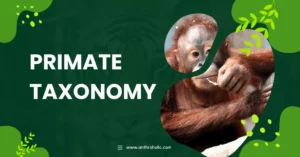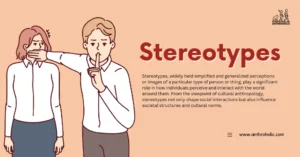AI Answer Evaluation Platform Live Now. Try Free Answer Evaluation Now
Ethnolinguistics
Ethnolinguistics, also known as anthropological linguistics, is a subfield of linguistics which studies the relationship between language and culture, and the way different ethnic groups perceive the world through language [1]. This field combines linguistic theory with ethnographic research to explore how language reflects social structures and cultural practices.

Understanding Ethnolinguistics
Language and Culture
At the core of ethnolinguistics is the recognition that language is not just a means of communication, but a cultural artifact that embodies unique perspectives and ideologies. Language informs, and is informed by, the social, political, and historical contexts within which it is used [2].
As such, studying the language of an ethnic group can provide deep insights into:
- Social structures and hierarchies
- Cultural norms and taboos
- Historical narratives and collective memory
- Political ideologies and power dynamics
The Sapir-Whorf Hypothesis
A seminal concept in ethnolinguistics is the Sapir-Whorf Hypothesis, which posits that the structure of a language influences or determines the ways in which its speakers conceptualize their world [3]. This hypothesis underscores the significance of language in shaping our thoughts, perceptions, and actions.
For instance, the way a language categorizes colors can impact how its speakers perceive and differentiate colors. This was famously illustrated by the case of the Himba tribe in Namibia, whose language has different words for various shades of green and blue, leading to more nuanced color differentiation compared to English speakers [4].
Ethnolinguistic Methods and Research
Ethnographic Fieldwork
Central to ethnolinguistics is ethnographic fieldwork, which involves living within a community to observe, document, and analyze its use of language in everyday contexts [5]. This method allows researchers to gain a deep understanding of language in its social and cultural context, beyond grammatical rules and vocabulary.
Data Analysis
Ethnolinguistic research often includes qualitative analysis of recorded conversations, interviews, and other speech data. In addition, it can also involve the creation of language inventories or ethnosemantic dictionaries, which document and explain the meanings and uses of words within a cultural context.
Table 1: Example of an Ethnosemantic Dictionary Entry
| English Word | Local Word | Cultural Context and Meanings |
|---|---|---|
| Water | “Maji” (Swahili) | In some East African cultures, water is associated with life and purification rituals. |
Applications and Implications of Ethnolinguistic Research
Language Preservation and Revitalization
By documenting and studying endangered languages, ethnolinguistics plays a crucial role in language preservation and revitalization efforts. Understanding a language’s cultural significance can inform strategies to promote its use among younger generations and preserve its role as a vehicle of cultural identity.
Cultural Understanding and Cross-cultural Communication
Understanding the cultural underpinnings of language can foster greater empathy and facilitate effective communication between different ethnic groups. This is especially crucial in multicultural societies and in contexts like international diplomacy or business.
Ethnolinguistics and Education
An understanding of ethnolinguistics can also greatly enhance educational practices. Educators who understand the cultural underpinnings of their students’ languages can deliver lessons in ways that are more meaningful and accessible to the learners.
For instance, in multilingual classrooms, teachers equipped with ethnolinguistic knowledge can create lessons that respect and incorporate the various language backgrounds of their students. This approach not only facilitates learning but also fosters an inclusive and culturally sensitive environment.
Bi- and Multilingualism
Ethnolinguistics also offers valuable insights into the experiences of bi- and multilingual individuals and communities. This field of study recognizes that multilingual speakers do not simply shift between different languages, but rather navigate complex sociocultural identities and norms through their use of language.
Understanding this complexity can inform policies and initiatives designed to support multilingual populations, such as language education programs, translation services, and media representation.
Ethnolinguistics and Technology
In the era of technology, ethnolinguistics has found new applications. As artificial intelligence and machine learning technologies develop, there is an increasing need for systems that can understand and interact with human language in nuanced and culturally sensitive ways.
Ethnolinguistic research can inform the development of such systems by providing insights into how language and meaning are constructed in different cultural contexts. This can help to create more inclusive and effective technology, from translation apps to voice recognition software.
Future Directions
The future of ethnolinguistics promises exciting new directions. With the advent of digital communication, there are new opportunities to study how language and culture interact in online spaces. This could include research into the cultural norms and identities constructed through social media language, or the ways in which digital technologies are influencing language use and evolution.
Furthermore, as the world becomes increasingly interconnected, there is a growing need for ethnolinguistic research that transcends single ethnic groups and explores intercultural communication and multilingualism on a global scale.
Conclusion
Ethnolinguistics, by investigating the interplay between language and culture, provides a deeper understanding of the human experience. Its insights are invaluable in a range of fields, from education and international relations to technology and digital communication. By furthering our understanding of the cultural dimensions of language, ethnolinguistics helps us to navigate an increasingly diverse and interconnected world.
References
[1] Duranti, A. (1997). Linguistic Anthropology. Cambridge University Press.
[2] Foley, W. A. (1997). Anthropological Linguistics: An Introduction. Wiley-Blackwell.
[3] Whorf, B. L. (1956). Language, Thought, and Reality: Selected Writings of Benjamin Lee Whorf. MIT Press.
[4] Roberson, D., Davidoff, J., Davies, I. R., & Shapiro, L. R. (2005). Color categories: Evidence for the cultural relativity hypothesis. Cognitive Psychology, 50(4), 378-411.
[5] Hymes, D. (1962). The Ethnography of Speaking. In T. Gladwin & W. C. Sturtevant (Eds.), Anthropology and Human Behavior. Anthropology Society of Washington.




